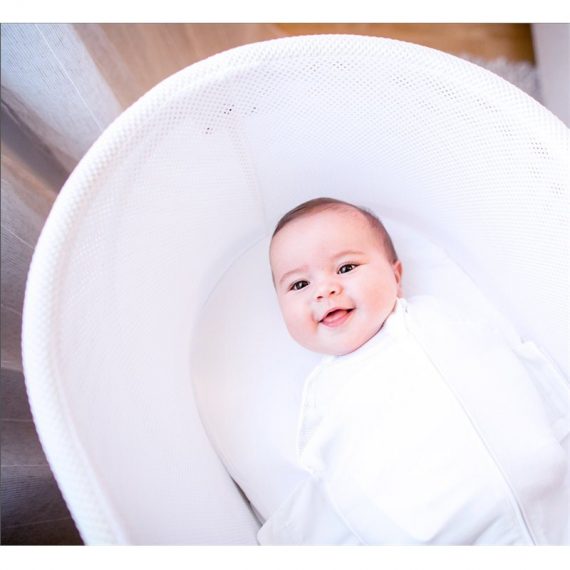Have you ever held your crying baby and wished you could get them to fall asleep almost instantly? Sleep expert Dr. Harvey Karp is on a mission to help parents do just that.
It’s not magic, but it sure looks like it. By embracing the five S’s, Dr. Harvey Karp says we can utilize the calming reflex, which turns off crying and turns on sleep in newborn babies. We caught up with world-renowned paediatrician to share his vast knowledge of all things babies with PLN.
Dr. Karp has authored the best selling book, The Happiest Baby on the Block which has been a lifesaver to many parents. Dr. Karp explains in his book that in his experience, babies are often not ready for the stimuli the world throws at them when they are born. They can often spend the first three months just getting used to sensing the world around them. He encourages parents to embrace what he calls the ‘fourth trimester’.
By doing so, parents can increase sleep time and decrease the time it takes to get baby to sleep as well as the time babies spend crying overstimulated and overtired. He advises parents to re-create the movement, sound and feeling of being inside the womb.
“The real key…is the discovery of the calming reflex,” he says. “Which is the discovery that babies have an ‘off’ switch for crying and an ‘on’ switch for sleep that you can activate by imitating certain sensory aspects of the womb.”
To imitate the womb, try using the five S’s:
Swaddle—Swaddling recreates the snugness of the womb and decreases startling.
Side or stomach—While the back is the only safe position for baby to sleep, allowing baby to lay on their stomach or side will help them mellow in no time.
Shush—Babies don’t need silence to sleep. In the womb, blood flow is louder than your vacuum. You can either make a “shusssh” sound close to your baby or use white noise.
Swing—There is a lot of movement in the womb. Babies need fast tiny motions to be soothed while crying.
Suck—Many babies will soothe easier with a pacifier. It is ‘the icing on the cake’.
He explains that while mothers feel they have to ‘suck it up’ and parent without sleep and often without outside assistance, it goes against what has been done in families for centuries.
“If you look at what is normal for human beings, [it] is to have a lot of help, and the mother is babied as much as the baby. For the last 100 years in our western European and North American culture, we stripped away that support,” he says, explaining parents need and can benefit from that kind of help.
While most parents expect to experience a lack of sleep while caring for their newborns, Dr. Karp says that there are several studies that show babies who are better sleepers in the first months of life actually have lower obesity rates at a year old. He says infants also benefit from having well-rested parents.
“Exhaustion is the number one trigger for postpartum depression, and when you are depressed there is more infant neglect,” he says.
Dr. Karp is now focusing on helping parents and babies to sleep better with his new baby bed, the SNOO. He says there has been a lot of research and support into proper feeding of babies, but very little in calming crying and getting baby to sleep. He explains many parents feel they have no choice other than to use cry-it-out techniques or forgo their sleep, but that simply is not true.
“It turns out we can calm most crying babies in minutes or seconds unless they are sick. We can help babies even in the first weeks of life sleep better, if we use the right techniques,” he says.

The SNOO utilizes five S’s by rocking baby, using white noise, swinging motion, and using a special swaddle bag that will not allow baby to roll over in their sleep. This is a very important safety feature as Dr. Karp explains it is not recommended for babies to be swaddled to sleep beyond two months.
“Studies show if the baby rolls over and gets on their stomach swaddled, they have a hard time breathing. It doubles the risk of infant sleep death,” he says. “However, if you un-swaddle them at that point, they wake up more, they cry more and the mother is even more tempted to bring them into bed or fall asleep on the sofa.”
Of course, everything the bed does, parents can do too with a little practice. Low-tech support in the form of trusted relatives and friends can make a world of difference, and many times just a phone call or text can quickly bring willing arms to hold your baby so you can get a few moments of rest. But if high-tech options are your jam, the SNOO could certainly take the edge off for overwhelmed parents desperate to help sooth their crying babies and get a better night’s sleep.
So PLNers, what helped you through that ‘fourth trimester’? Share your thoughts below!
*Opinions expressed are those of the author, and not necessarily those of Parent Life Network or their partners.




 Sponsored
Sponsored



